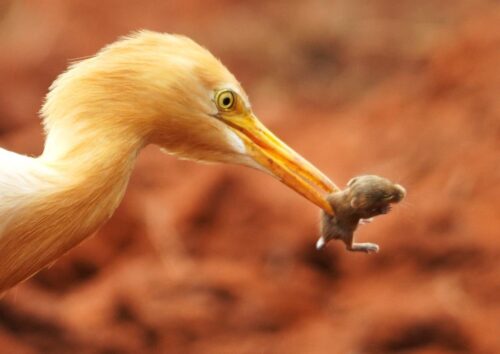Rama Krishna Sangem
Former RS MP and Green India Challenge founder activist J Santosh Kumar this Sunday, July 6, captured on his camera an egret along with a prey it caught. He posted four pics of his shoot this morning on X and by evening they got not less than 1.1 k views and many likes. Many of his followers on X commended the nice camera work – of an egret or cattle egret, as one of them said – catching, grappling and gobbling a tiny prey.
This level of camera work needs a lot of patience and lens training. This Santosh has been doing for quite some time. Being a professional politician he is, paying this much attention to wildlife photography is noteworthy. Santosh is setting an example for others to develop a second hobby, besides politics. We have seen how our former PM VP Singh developed painting and another former PM PV Narasimha Rao penned writing books, as stellar examples of politicians cultivating non-political hobbies.
Why called cattle egrets?
Because, mostly they go with cattle in swamp waters. They are white birds adorned with buff plumes in the breeding season. They nest in colonies, usually near bodies of water and often with other wading birds. The nest is a platform of sticks in trees or shrubs. Cattle egrets exploit drier and open habitats more than other heron species. Their feeding habitats include seasonally inundated grasslands, pastures, farmlands, wetlands, and rice paddies, as per wikipeadia.
They often accompany cattle or other large mammals, catching insect and small vertebrate prey disturbed by these animals. Some populations are migratory and others show post-breeding dispersal.
Adult cattle egrets have few predators, but birds or mammals may raid their nests, and chicks may be lost to starvation, calcium deficiency, or disturbance from other large birds.
Cattle egrets maintain a special relationship with cattle, which extends to other large grazing mammals; increased human livestock farming is believed to be a major cause of their suddenly expanded range. Cattle egrets remove ticks and flies from cattle and consume them. This benefits both organisms, but it has been implicated in the spread of tick-borne animal diseases.
This rainy season is the best to watch these while birds near water bodies and take snaps, of course!


